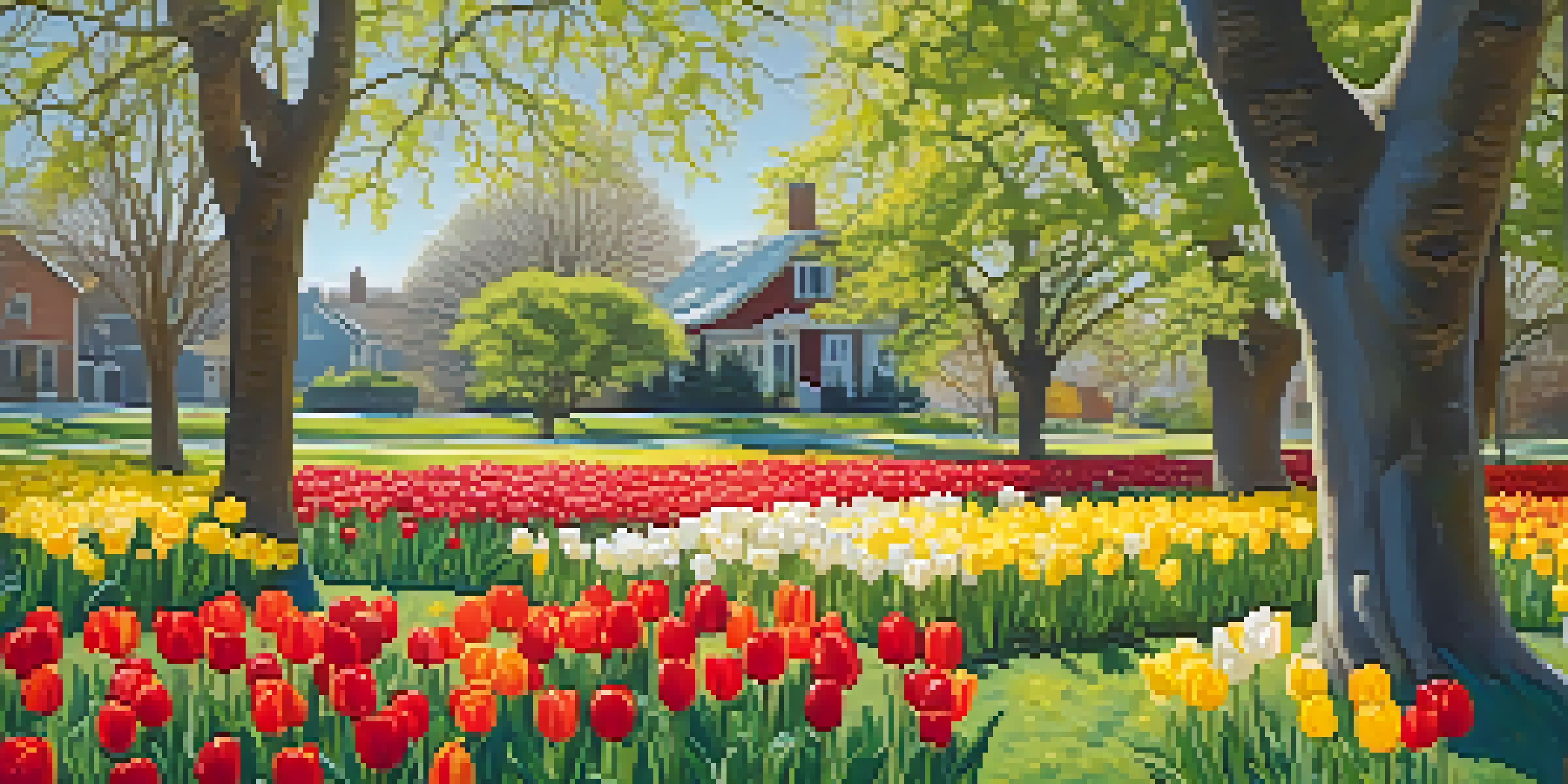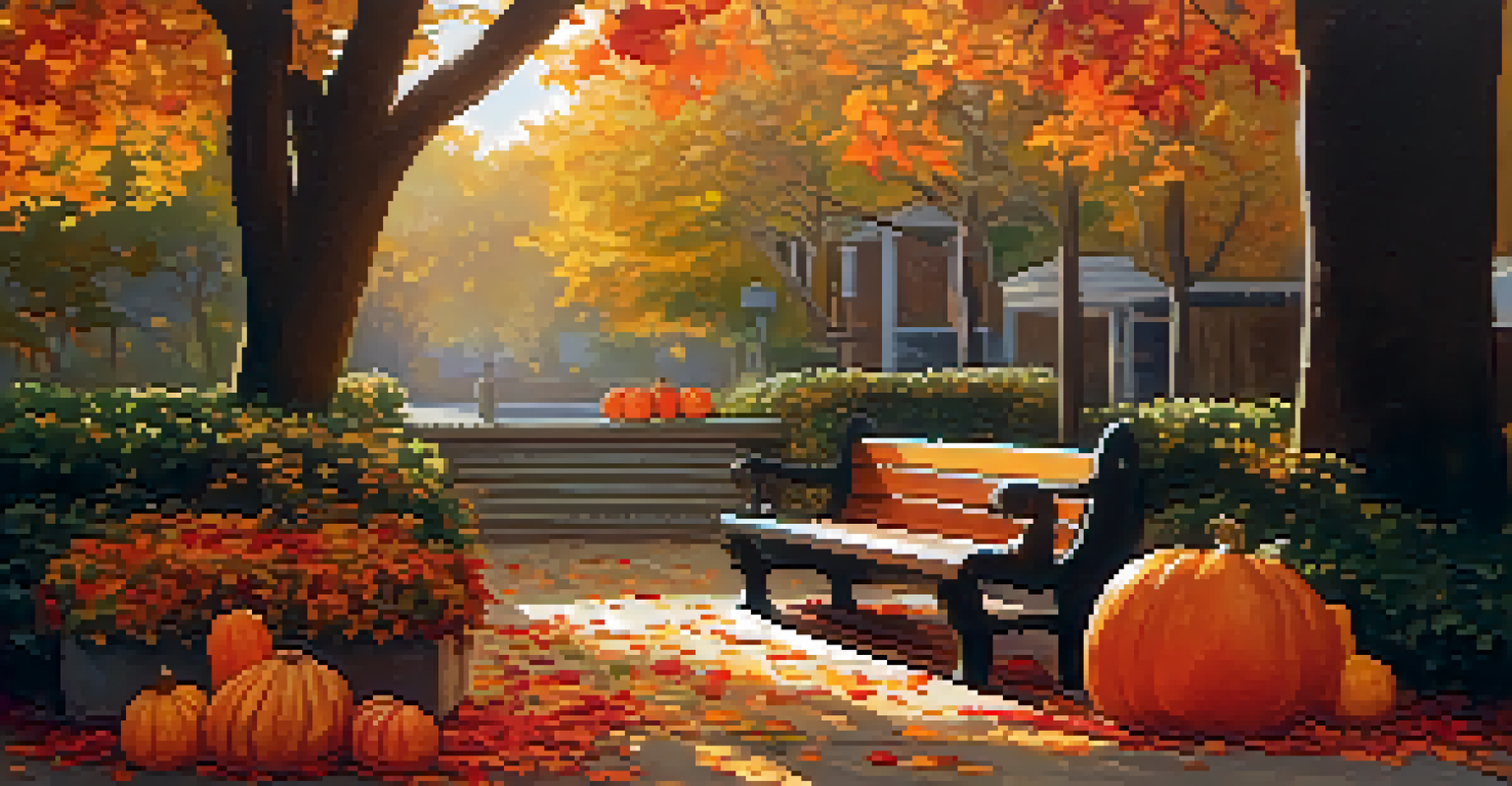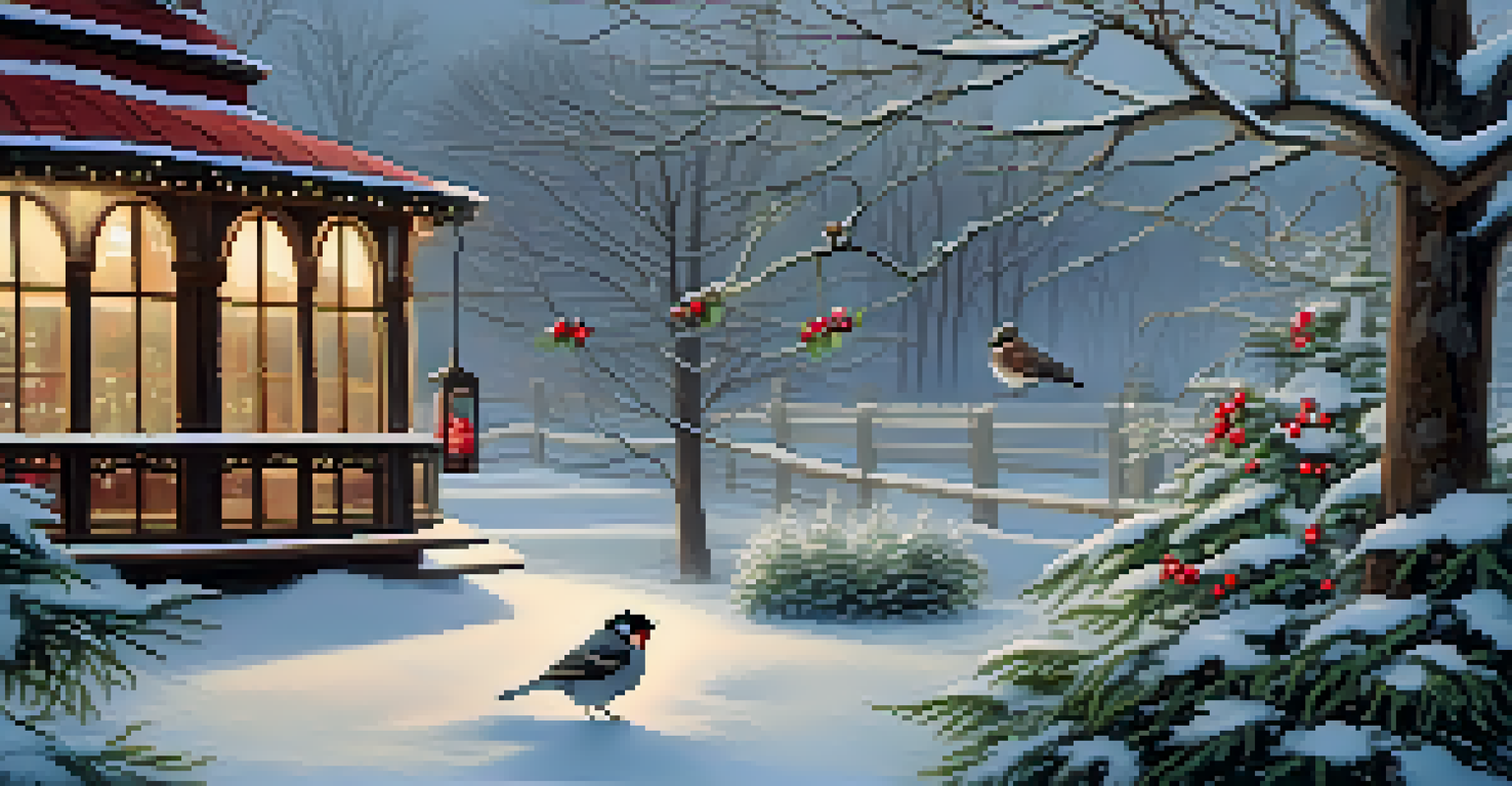Enhancing Outdoor Spaces with Seasonal Plants

Understanding the Importance of Seasonal Plants
Seasonal plants play a vital role in enhancing outdoor spaces by adding color and life. Each season brings unique plants that not only beautify your garden but also support local wildlife. For example, planting spring blossoms like tulips and daffodils can create a vibrant welcome after winter's chill.
To plant a garden is to believe in tomorrow.
These plants often have specific growing habits and bloom times, which means they can be strategically placed to ensure your garden looks appealing year-round. This planning allows you to enjoy fresh blooms in spring, lush greens in summer, and warm tones in fall. By understanding their life cycles, you can create a dynamic landscape that evolves with the seasons.
Moreover, seasonal plants can improve the overall health of your garden. They can attract beneficial insects, like bees and butterflies, which are crucial for pollination. This harmony between plants and wildlife contributes to a thriving ecosystem right in your backyard.
Choosing the Right Plants for Each Season
Selecting the right plants for each season depends on your climate and personal preferences. For instance, if you live in a warmer region, consider planting drought-resistant beauties like succulents in the summer. Conversely, if you're in a cooler climate, vibrant fall foliage from maple or oak trees can bring warmth to your outdoor space.

Don't forget about winter! Evergreens, like pines and spruces, maintain their color and structure, providing visual interest even when other plants are dormant. Mixing various seasonal plants ensures your garden remains lively and visually appealing throughout the year.
Seasonal Plants Enhance Outdoor Beauty
Incorporating seasonal plants adds vibrant colors and supports local wildlife, creating a dynamic and appealing garden.
To make informed choices, consult local gardening centers or resources that focus on native plants. Native species are often hardier and better suited to your local conditions, making them a smart choice for a resilient garden.
Designing Your Outdoor Space with Seasonal Plants
When designing your outdoor space, think about layering plants for depth and texture. Taller plants can serve as a backdrop, while shorter blooms can fill in the foreground, creating a beautiful tapestry of colors and shapes. For example, using sunflowers behind petunias can create a stunning visual contrast.
Gardening adds years to your life and life to your years.
Consider grouping plants with similar water and sunlight needs together, which will make maintenance easier and ensure that all your plants thrive. You can create distinct zones, such as a shaded retreat filled with ferns and hostas, while sunny areas can burst with vibrant annuals and perennials.
Lastly, remember to include pathways and seating areas within your design. This not only enhances accessibility but also encourages you to spend more time outdoors, fully enjoying the beauty of your seasonal plantings.
Creating Seasonal Displays for Maximum Impact
Seasonal displays can make a significant impact on your outdoor space, drawing attention and creating focal points. One effective strategy is to use containers filled with seasonal plants, allowing for easy rotation as the seasons change. Imagine a beautiful arrangement of spring pansies that can be swapped out for summer petunias!
You can also incorporate seasonal themes into your displays. For instance, using pumpkins and colorful mums in the fall can enhance the festive spirit of the season. As winter approaches, consider adding evergreen arrangements with red berries for a touch of holiday cheer.
Choose Plants for Your Climate
Selecting the right plants based on your climate and personal preferences ensures a resilient and thriving garden year-round.
Don't shy away from using decorative elements like garden statues or fairy lights to complement your seasonal displays. These additions can enhance the charm of your space and create a welcoming atmosphere.
Maintenance Tips for Seasonal Plants
To keep your seasonal plants thriving, regular maintenance is essential. This includes watering, pruning, and fertilizing to ensure they have the nutrients they need. Seasonal plants often require different care routines, so it's important to familiarize yourself with their specific needs.
For instance, summer blooms may need more frequent watering during hot spells, while fall plants may require less as temperatures drop. Watching for pests and diseases is also crucial; a proactive approach can save your plants from potential damage.
Lastly, seasonal plants can benefit from occasional deadheading, which encourages new blooms and keeps your garden looking tidy. With a little care and attention, your outdoor space can remain vibrant and healthy throughout the year.
Incorporating Edible Seasonal Plants
Seasonal plants aren't just for aesthetics; incorporating edible varieties can add a delicious twist to your outdoor space. Think about planting herbs in the spring, like basil and cilantro, which can easily transition into summer salads. This approach not only beautifies your garden but also provides fresh ingredients for your kitchen.
Fruits and vegetables also make excellent seasonal additions. Summer squash and tomatoes can thrive in sunny spots, while cool-weather crops like kale and carrots can be planted in the fall. This way, you can enjoy a bountiful harvest while enhancing the beauty of your outdoor space.
Maintenance Keeps Plants Thriving
Regular maintenance, including watering and pruning, is essential for keeping seasonal plants healthy and vibrant throughout the year.
Furthermore, edible plants can attract beneficial insects, just like ornamental varieties. This creates a thriving ecosystem that supports both your gardening efforts and local wildlife.
Embracing the Beauty of Seasonal Change
One of the most enchanting aspects of using seasonal plants is witnessing the natural cycle of change throughout the year. As each season arrives, your outdoor space transforms, offering a fresh perspective and renewed appreciation for nature's beauty. This constant evolution can be a source of inspiration and joy.
Engaging with your garden during each season allows you to connect with nature on a deeper level. Whether it’s planting seeds in spring, enjoying summer blooms, or raking leaves in fall, each activity fosters a sense of fulfillment and mindfulness.

Finally, embracing this seasonal beauty can encourage you to invite family and friends to share in the experience. Whether it’s a summer barbecue surrounded by blooming flowers or a cozy winter gathering by evergreen arrangements, your outdoor space can become a cherished gathering place.